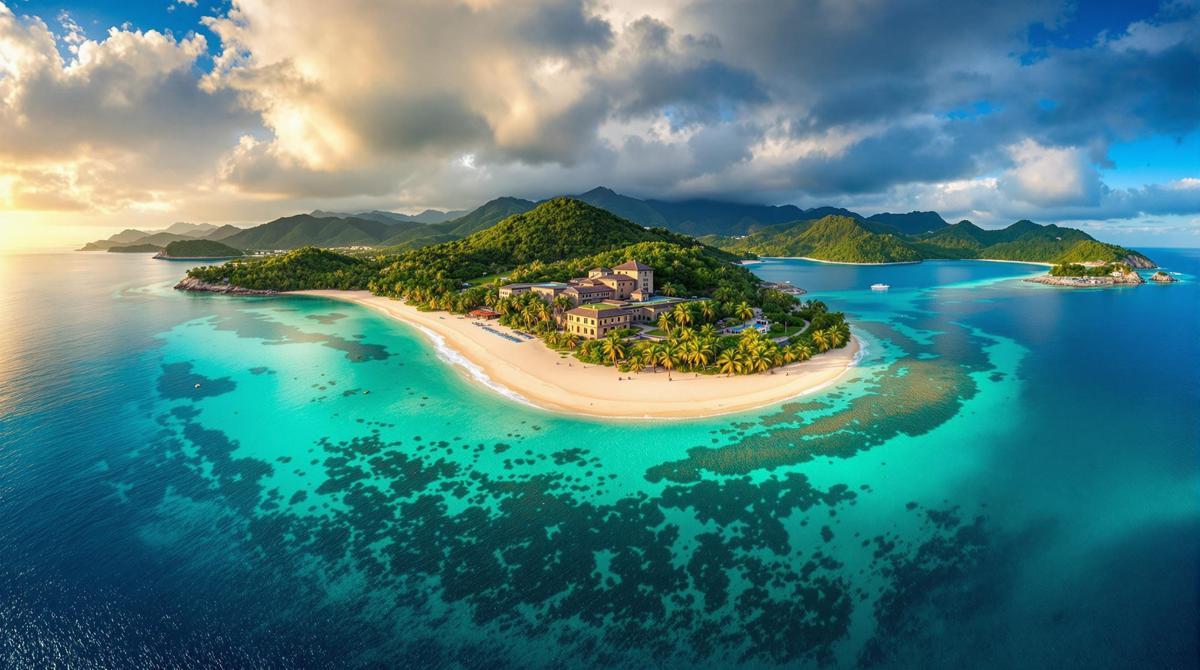Vietnam’s best-kept secret might be an archipelago with a haunting past and jaw-dropping beauty. The Con Dao Islands, a remote paradise off Vietnam’s southern coast, remain delightfully uncrowded despite offering some of Southeast Asia’s most pristine beaches, fascinating history, and remarkable wildlife encounters.
A dark past transformed into natural wonder
For over a century, Con Dao housed notorious colonial prisons where thousands of Vietnamese revolutionaries suffered and died. Today, this painful history has given way to extraordinary conservation success. Nearly 80% of the archipelago’s 16 islands are protected national parkland, creating a rare sanctuary where development takes a backseat to preservation.
“Con Dao represents Vietnam’s resilience – a place of tremendous suffering transformed into one of indescribable beauty,” explains Nguyen Thi Minh, local historian and tour guide.
Beaches that rival the world’s finest
Dam Trau Beach, with its crescent of golden sand backed by swaying palms, feels worlds away from Vietnam’s more developed coastal areas. The crystal-clear waters of Dat Doc Beach offer exceptional snorkeling among vibrant coral gardens teeming with tropical fish. Unlike Mediterranean destinations, Con Dao’s shores remain blissfully uncrowded even during peak season.
A turtle sanctuary like no other
Between June and September, endangered green sea turtles lumber ashore to nest on Con Dao’s protected beaches. Lucky visitors can witness these ancient creatures laying eggs or – even more magical – tiny hatchlings scurrying toward the sea during carefully managed nighttime conservation tours. This rare wildlife experience draws nature enthusiasts seeking alternatives to crowded volcanic wilderness destinations.
Historical immersion in the prison complex
The haunting Con Dao Prison Complex offers a sobering counterpoint to the islands’ natural beauty. Walking through the infamous “tiger cages” where prisoners were tortured creates a powerful connection to Vietnam’s struggle for independence. The cemetery honoring revolutionary heroes has become a place of pilgrimage for Vietnamese visitors, with incense offerings creating a haunting sensory experience.
Underwater wonderland for divers
Con Dao’s marine protected areas harbor some of Vietnam’s healthiest coral ecosystems. Divers regularly encounter blacktip reef sharks, giant barracudas, and curious dugongs (sea cows) gliding through crystal waters. The diving here rivals more famous destinations but without the crowds or environmental damage.
“I’ve guided dives across Southeast Asia for 15 years, and Con Dao still surprises me with its biodiversity and visibility,” says James Nguyen, dive instructor at Con Dao Dive Center.
The island’s emerging culinary scene
Fresh-caught seafood dominates Con Dao’s menus, often prepared with minimal intervention to highlight natural flavors. Standouts include grilled mackerel with green peppercorns (a local specialty) and crab in tamarind sauce. Unlike more developed digital nomad destinations, dining here remains authentically local.
When to visit and where to stay
The dry season (November to February) offers perfect conditions for hiking and beach exploration. For turtle encounters, schedule your visit between June and September. Six Senses Con Dao provides luxury eco-accommodation, while budget travelers can find comfortable guesthouses in Con Son town for under $30 per night.
Getting there: The adventure begins
Daily 45-minute flights connect Ho Chi Minh City to Con Dao, offering spectacular aerial views of the archipelago. For the adventurous, overnight ferries depart from Vung Tau, providing a more immersive journey for those with flexible schedules and a desire for authentic experiences that most digital nomads seek.
Con Dao offers a rare combination of historical significance, natural wonders, and cultural immersion without the overtourism affecting many Asian destinations. Unlike hidden European gems, this Vietnamese treasure allows visitors to experience Southeast Asian paradise as it once was – pristine, powerful, and profoundly moving.
